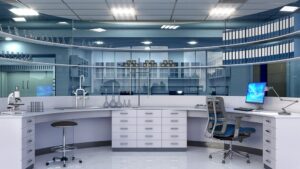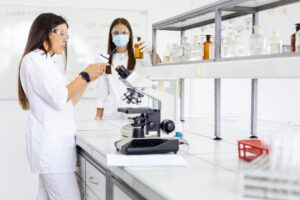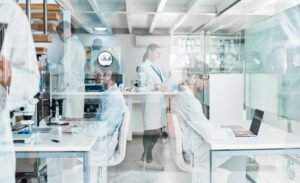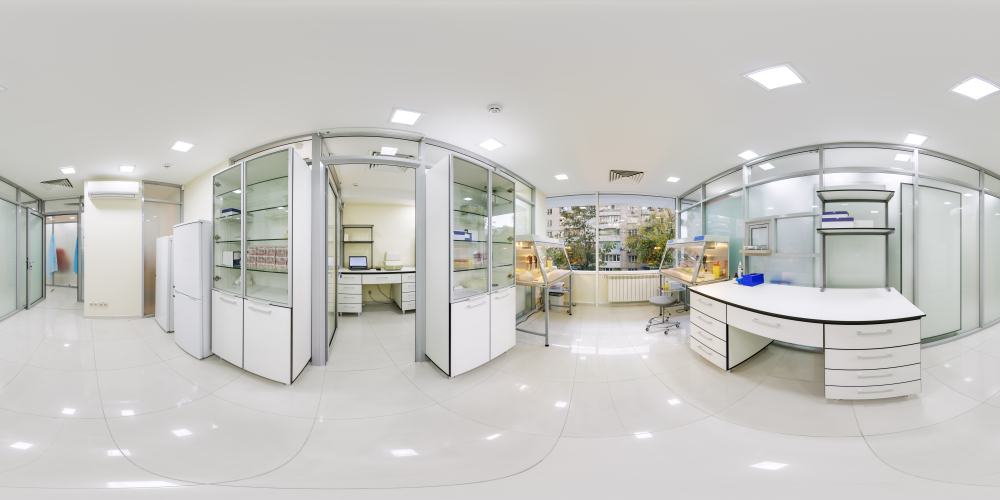
Lab furniture plays a crucial role in creating functional and efficient laboratory spaces that meet the specific needs of researchers and scientists. The furniture lab shows how the merging of design with functionality is essential in ensuring that lab furniture meets practical requirements and enhances the overall aesthetics and usability of the space.
By carefully considering factors such as material selection, ergonomic design, safety features, and integration of technology, laboratories can create workspaces that promote productivity, safety, and innovation.
When discussing lab furniture, the term typically includes various types of furniture and fixtures specifically designed for use in laboratory settings. This can include:
- Lab benches: Work surfaces where experiments and analyses are conducted. These may include chemical-resistant countertops, lab tables, and built-in sinks or other utilities.
- Cabinetry and storage: Casework like cabinets, shelves, and drawers for storing equipment, chemicals, and supplies. These are often designed to be chemical-resistant and provide safe storage solutions.
- Fume hoods: Enclosed workspaces with an exhaust system to remove hazardous fumes, vapors, or dust generated during experiments.
- Seating: Chairs or stools designed for laboratory use, typically with adjustable height and ergonomic features.
- Safety equipment: Safety showers, eyewash stations, and emergency exits that are frequently integrated into the design of laboratory furniture.
- Utility fixtures: Sinks, gas outlets, electrical outlets, and data ports integrated into benchtops or walls for easy access.
- Specialized equipment stands: Stands designed to hold specific laboratory equipment such as microscopes, centrifuges, or incubators.
- Mobile carts: Carts or trolleys for transporting equipment and supplies within the lab.
- Lab-specific accessories: Items such as lab stools, step stools, and footrests designed for use in laboratory environments.
- Workstation accessories: Accessories such as monitor arms, task lighting, and storage bins that enhance the functionality of lab workstations.
Overall, lab furniture is designed to meet the specific needs of laboratory environments, including durability, chemical resistance, and ergonomic considerations, to ensure a safe and efficient workspace for researchers and scientists.
Additional Reading: Choosing the Right Lab Benches for Your Research Needs
The Furniture Lab: Key Considerations When Choosing Lab Furniture
When choosing lab furniture that merges design with functionality for modern labs, several factors should be considered to ensure a seamless integration of equipment and furniture, meeting the needs of both users and the lab’s purpose. Here are some key considerations for:
1. Material Selection
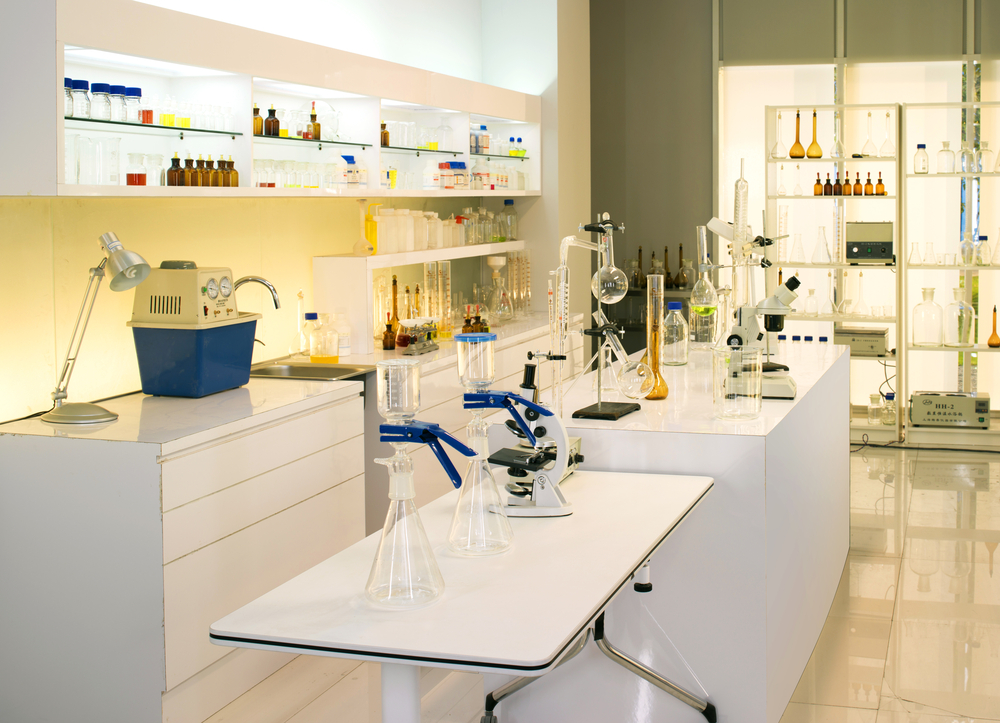
Choosing lab furniture made of materials that are durable, chemical-resistant, and easy to clean is essential for merging design with functionality in laboratory spaces. Stainless steel, epoxy resin, and laminate are commonly used materials that offer these qualities.
- Stainless steel is highly durable and resistant to corrosion, making it ideal for work surfaces, cabinets, and storage units.
- Epoxy resin is chemical-resistant and can withstand harsh chemicals, acids, and solvents commonly used in laboratories.
- Laminate is another popular choice due to its durability and ease of cleaning.
When selecting lab furniture, it’s important to consider the specific needs of the lab environment and choose materials that can withstand the demands of daily use while maintaining a clean and safe working environment.
2. Ergonomics
Choosing lab furniture with ergonomic design is crucial for ensuring the comfort and well-being of laboratory workers, while also promoting efficiency and productivity. Ergonomic lab furniture is designed to reduce strain and fatigue by providing adjustable features that accommodate different body types and working positions.
When selecting ergonomic lab furniture, consider features such as
- adjustable height work surfaces
- chairs with lumbar support and adjustable height
- monitor arms for easy screen adjustment
- furniture with rounded edges and smooth surfaces to prevent injuries and allow for easy cleaning.
By prioritizing ergonomics in lab furniture selection, you can create a safer and more comfortable work environment for laboratory staff, ultimately enhancing overall productivity and performance.
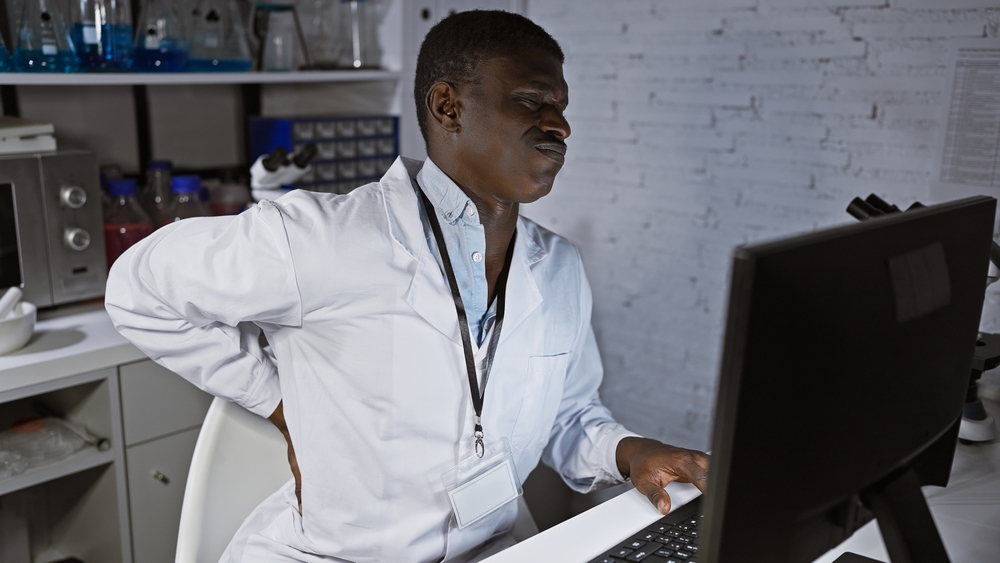
3. Modularity and Adaptability
Modular furniture offers a high degree of flexibility, making it an excellent choice for merging design with functionality in laboratory spaces. Modular furniture can be easily reconfigured or expanded to adapt to changing needs. Multiple configuration options allow labs to maximize their use of space and resources.
- This flexibility is particularly valuable in research environments where equipment needs may vary over time.
- Additionally, modular furniture is often designed with efficiency in mind, offering features such as integrated storage, ergonomic adjustments, and easy assembly.
By selecting modular furniture, labs can create versatile workspaces that promote collaboration, streamline workflows, and enhance overall productivity.
4. Storage
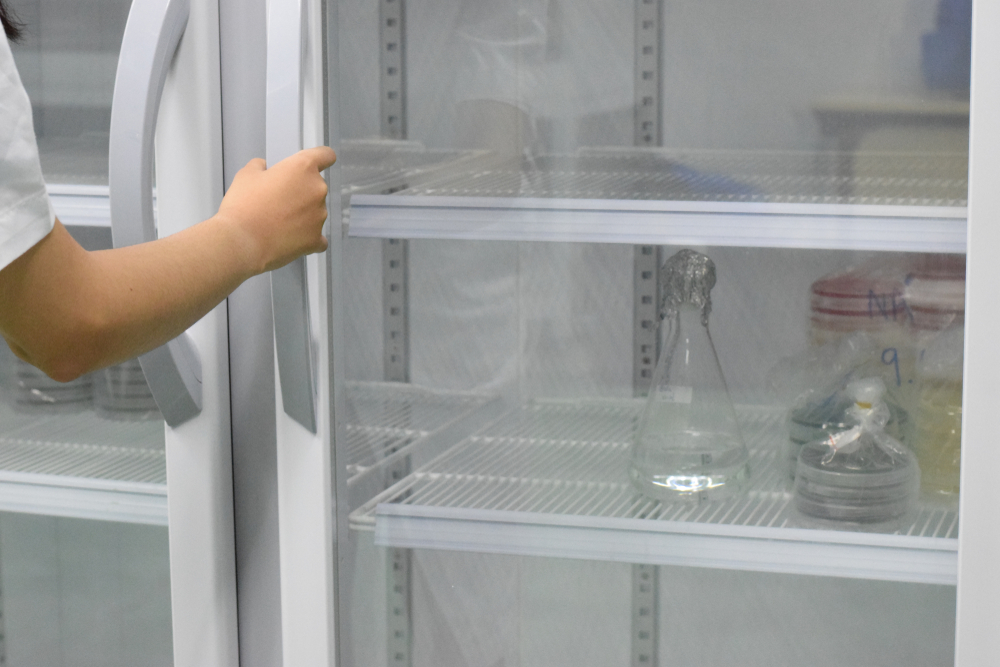
Adequate storage is essential for maintaining a well-organized and efficient laboratory space. When choosing storage solutions, it’s important to consider the specific needs of the lab, including the types and sizes of items to be stored.
- Cabinets, shelves, and drawers should be durable, chemical-resistant, and easy to clean.
- Adjustable shelves and modular storage systems can help maximize storage capacity and accommodate items of varying sizes.
- Additionally, storage should be conveniently located near work areas to minimize unnecessary movement.
Proper storage enhances organization and efficiency and helps maintain a safe and clutter-free laboratory environment.
5. Workspace Layout
The layout of the workspace plays a critical role in merging design with functionality in laboratory spaces. An efficient layout should optimize workflow, facilitate collaboration, and ensure the safety of laboratory staff.
- Workstations should be arranged to minimize the need for unnecessary movement and ensure easy access to equipment and supplies.
- Consideration should also be given to the placement of utilities such as gas, water, and electrical outlets, as well as the integration of safety features such as emergency eyewash stations and fire extinguishers.
- Additionally, the layout should allow for flexibility to accommodate changes in equipment or research needs.
By carefully planning the workspace layout, labs can create a functional and productive environment that meets the specific requirements of their research activities.
6. Safety Features
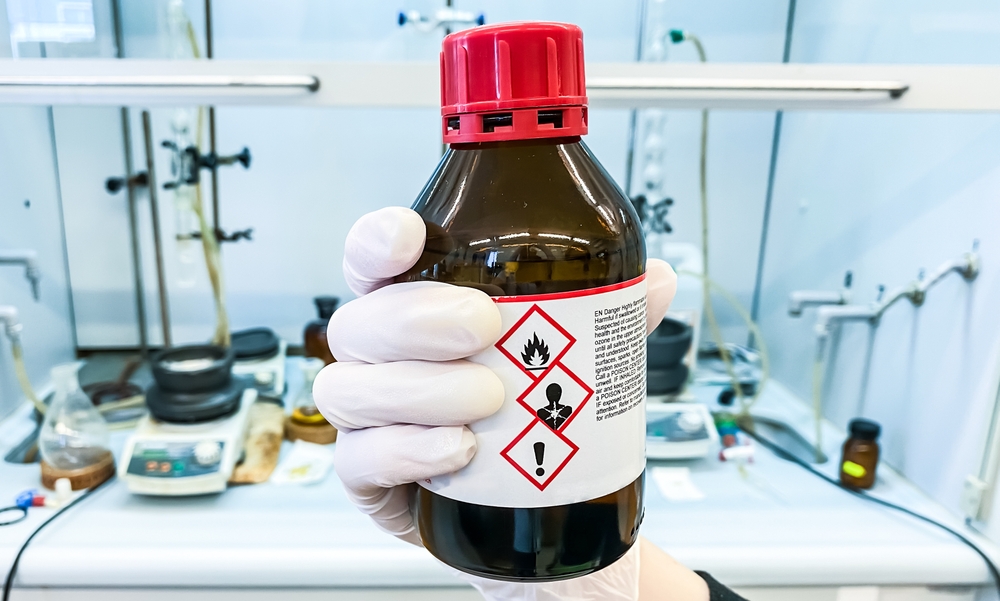
Safety considerations are paramount when choosing lab furniture to merge design with functionality.
- Features such as spill trays, flame-retardant materials, and safety shields should be integrated into furniture design to minimize hazards.
- Spill trays can contain chemical spills and prevent them from spreading, reducing the risk of chemical exposure.
- Flame-retardant materials help prevent fires and protect laboratory staff and equipment.
- Safety shields, such as barriers or shields around equipment, can provide additional protection from hazards.
- Proper ventilation is also critical to remove fumes and maintain air quality in the lab.
Compliance with safety standards, such as those set by organizations like the Occupational Safety and Health Administration (OSHA) or the National Fire Protection Association (NFPA), ensures that lab furniture meets established safety requirements and provides a safe working environment for laboratory personnel.
7. Functionality for All Users
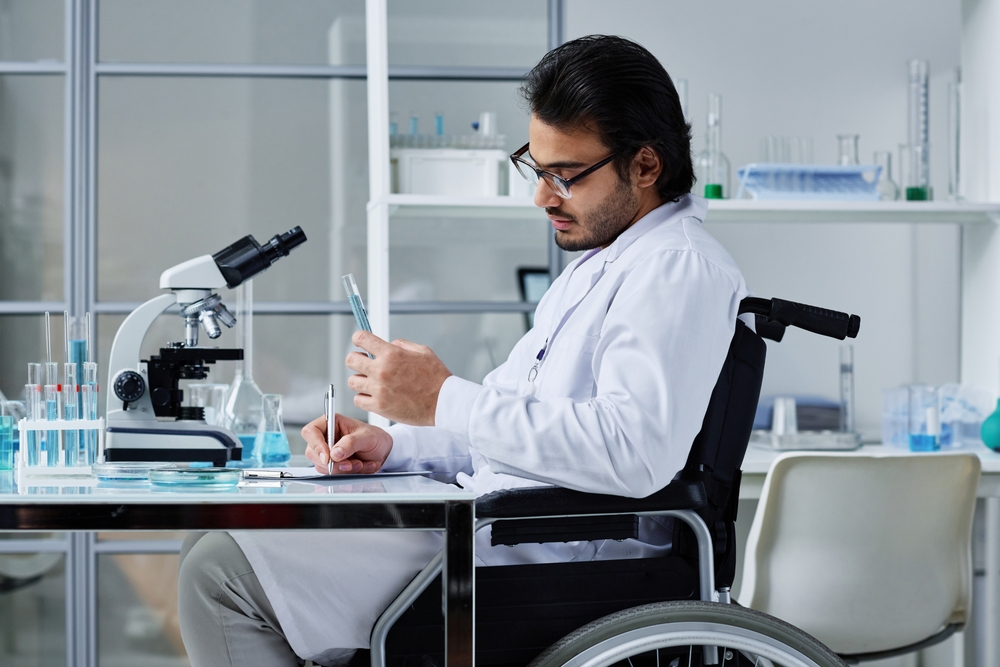
When selecting lab furniture, it’s essential to consider ADA (Americans with Disabilities Act) guidelines to ensure that the furniture maintains functionality for all users.
- ADA guidelines require that furniture be accessible to individuals with disabilities, including those who use wheelchairs or have other mobility impairments.
- This includes ensuring that work surfaces, storage areas, and equipment are at a height that can be easily reached and used by individuals in wheelchairs.
- Furniture should also be designed to provide adequate knee clearance and maneuvering space for wheelchair users.
- Additionally, furniture should be stable and sturdy to support individuals with mobility impairments.
By considering ADA guidelines when selecting lab furniture, laboratories can create inclusive and accessible workspaces that meet the needs of all users.
8. Aesthetics
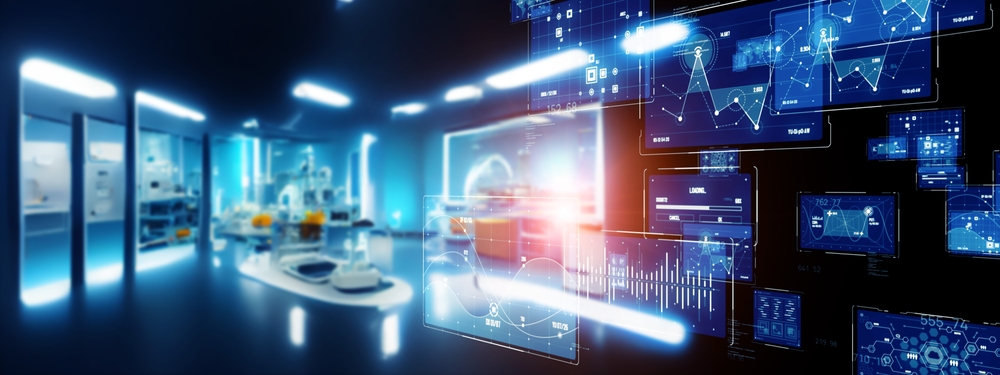
Aesthetics play a crucial role in creating a pleasant and inspiring work environment in laboratories. Well-designed lab furniture can contribute to a sense of professionalism, cleanliness, and organization.
- Thoughtful use of color, lighting, and materials can enhance the overall ambiance of the space, making it more inviting and comfortable for laboratory staff.
- Natural daylight, in particular, has been shown to have positive effects on the nervous system and circadian rhythms, promoting well-being and productivity.
Aesthetically pleasing furniture can also help boost morale and creativity, creating a positive atmosphere for scientific research and innovation.
Additional Reading: Glass Wall Cabinets: Merging Aesthetics with Function in the Lab
9. Integration of Technology
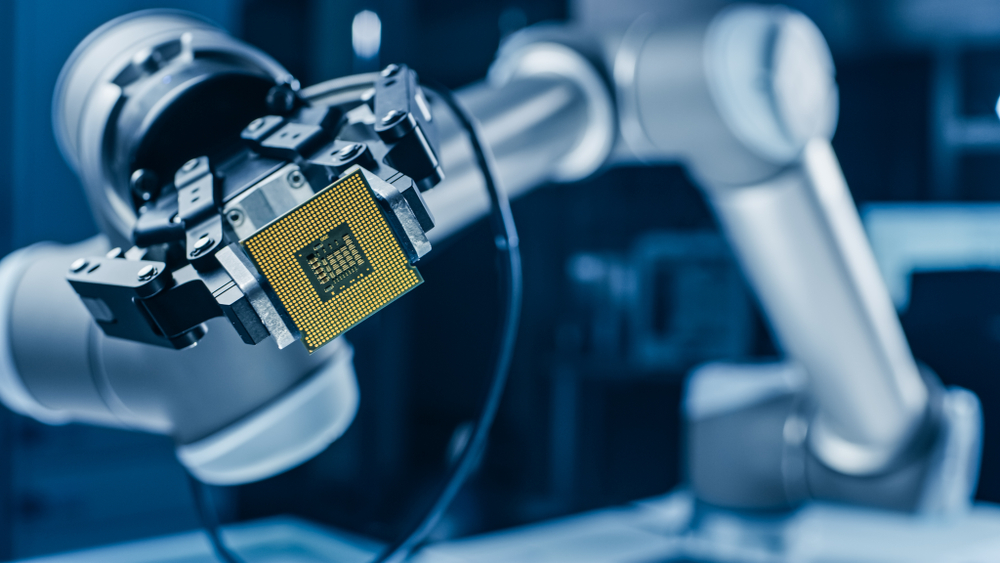
The integration of technology is essential for maintaining functionality in laboratory spaces and accommodating evolving requirements.
- Lab furniture should be designed to accommodate various technological equipment, such as computers, monitors, and data management systems.
- This includes features such as integrated power outlets, data ports, and cable management systems to ensure easy access and connectivity.
- Additionally, furniture should be designed with flexibility in mind to adapt to changes in technology and research needs.
- Modular furniture, adjustable work surfaces, and reconfigurable layouts can help labs stay current with technological advancements and maintain functionality over time.
By integrating technology into lab furniture design, labs can create efficient and adaptable workspaces that support their research objectives.
10. Collaboration

Incorporating furniture for common areas and meeting spaces is essential for creating a collaborative and innovative environment in laboratories. These spaces should be designed to encourage interaction and idea-sharing among researchers.
- Comfortable seating arrangements, such as lounge chairs and sofas, can create a relaxed atmosphere conducive to brainstorming and discussion.
- Additionally, modular furniture that can be easily reconfigured allows for flexibility in accommodating different group sizes and activities.
- Including amenities such as whiteboards, screens for presentations, and access to digital tools can further enhance collaboration and innovation.
By providing well-designed common areas and meeting spaces, laboratories can foster a sense of community and teamwork, ultimately leading to increased productivity and creativity.
11. Cost-effectiveness
When selecting lab furniture, it’s important to consider not only the initial cost but also the long-term maintenance and replacement costs. Investing in high-quality, durable furniture may require a higher initial investment but can result in significant long-term savings.
- Durable furniture is less likely to require frequent repairs or replacements, reducing maintenance costs over time.
- Additionally, utilizing the services of an accredited lab furniture provider can provide crucial guidance in selecting furniture that meets industry standards and regulations. These providers can offer expertise in choosing furniture that is not only functional and ergonomic but also durable and cost-effective.
- By considering both the initial and long-term costs of lab furniture, laboratories can make informed decisions that prioritize quality and durability, ultimately leading to cost savings in the long run.
By considering these factors, you can choose lab furniture that not only meets the functional requirements of a modern lab but also enhances its design and overall efficiency.
Maintenance Considerations
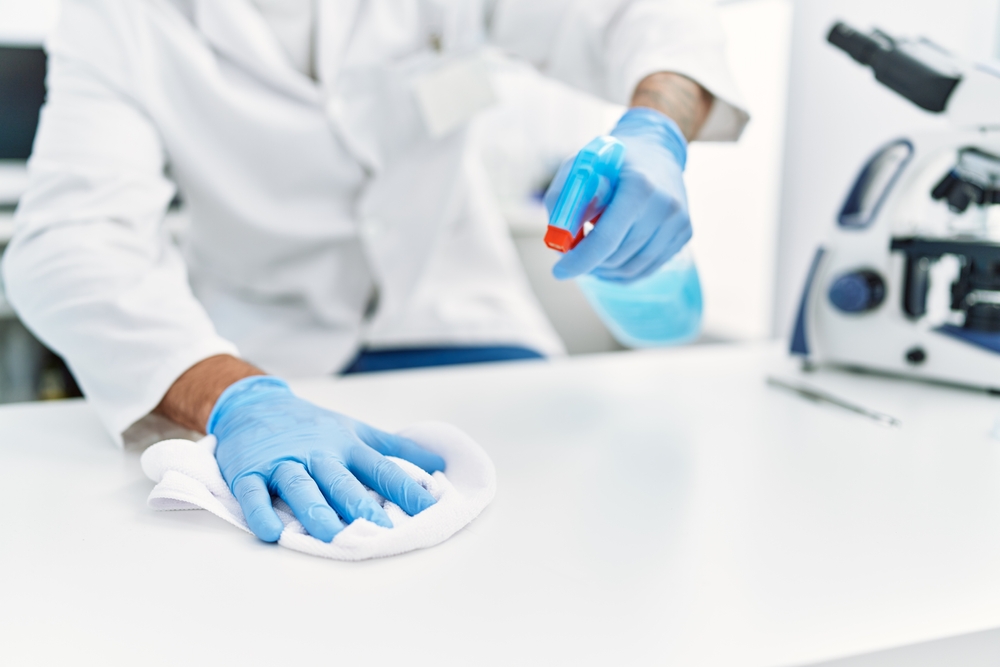
There are several considerations related to ease of maintenance when choosing lab furniture that merges with functionality:
- Material Selection: Choose materials that are durable and easy to clean. Stainless steel, laminate, and epoxy resin are popular choices for lab furniture due to their resistance to chemicals and ease of maintenance.
- Design Features: Look for workbenches and other lab furniture with smooth surfaces and minimal seams or crevices where dirt and debris can accumulate. This makes cleaning easier and more effective.
- Modularity: Select modular furniture that can be easily reconfigured or replaced. This allows for quick maintenance or updates without disrupting the entire lab layout.
- Accessibility: Ensure that furniture is designed for easy access to components that may need maintenance, such as plumbing or electrical connections. This can reduce downtime for repairs.
- Compatibility with Cleaning Agents: Choose furniture that is compatible with common cleaning agents used in laboratories. Some materials may be damaged by certain chemicals, so it’s important to check compatibility before purchasing.
- Replaceable Parts: Opt for furniture with easily replaceable parts, such as drawer slides or hinges. This can extend the lifespan of the furniture and reduce the need for complete replacements.
- Manufacturer Support: Choose furniture from manufacturers that offer reliable customer support and maintenance services. This can be beneficial for troubleshooting issues and obtaining replacement parts.
By considering these factors, you can select lab furniture that not only meets the functional needs of your lab but also makes maintenance easier and more efficient.
Lab Furniture Considerations for Specialized Fields of Research
When considering the design and functionality of laboratories in specialized research and study fields, it’s essential to recognize the unique requirements of each industry. Here are some key considerations for merging design with functionality in these specialized labs:
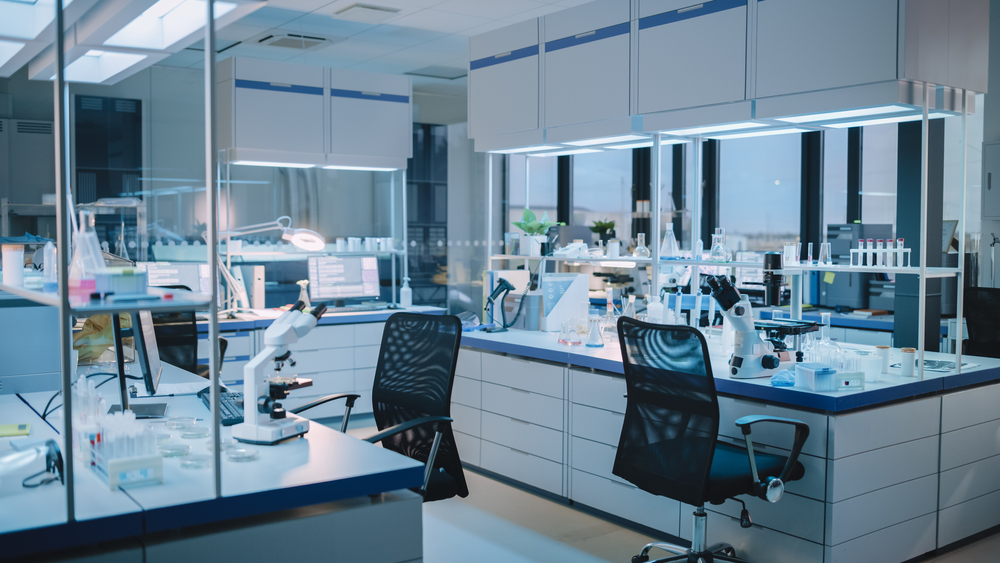
Biotechnology and Pharmaceuticals
These labs are used for analyzing various substances to determine their composition or properties.
— Design Considerations: Include flexible layouts to accommodate various equipment setups and workflows. Ensure adequate ventilation and safety features for handling potentially hazardous substances.
— Functional Notes: Pay attention to specialized equipment needs, such as biosafety cabinets and incubators, and the integration of data management systems for research tracking and compliance.
Material Science and Chemistry
Researchers in this field often investigate the structure of materials at the atomic or molecular level, and analyze how materials respond to different conditions.
— Design Considerations: Provide ample workspace for sample preparation and analysis. Consider the need for specialized utilities like fume hoods and chemical-resistant surfaces.
— Functional Notes: Focus on ergonomic design to minimize repetitive strain injuries. Ensure compatibility with advanced analytical instruments and equipment.
Healthcare and Clinical Research
Highly trained scientists work with sophisticated instrumentation to deliver disease control and prevention services.
— Design Considerations: Create spaces that promote collaboration among staff. Provide comfortable and private areas for patient consultations and sample collection.
— Functional Notes: Integrate advanced diagnostic equipment and ensure easy access to patient data for efficient analysis and reporting.
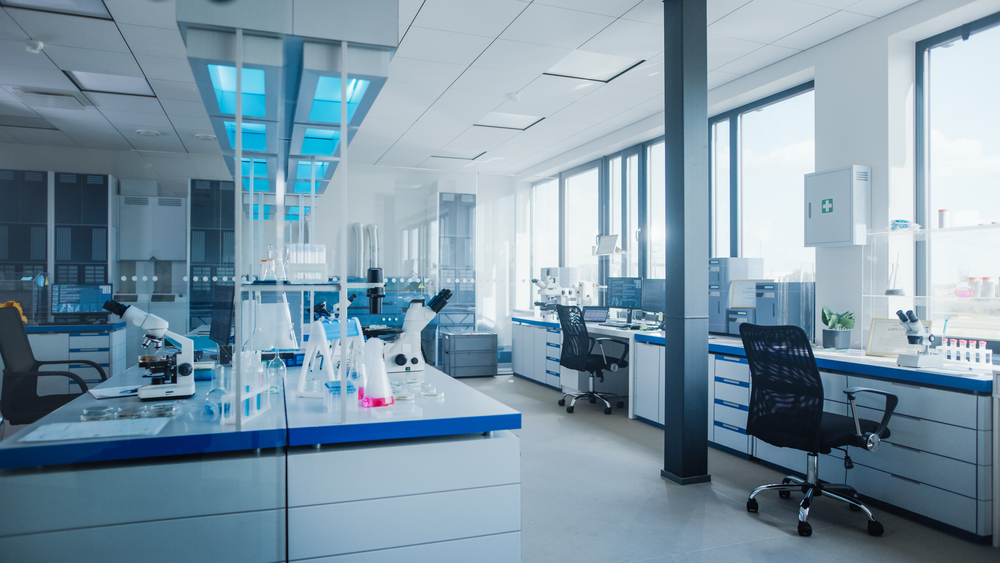
Medical Labs
Medical laboratory scientists collaborate directly with lab technicians and physicians to effectively diagnose and monitor disease processes and the effects of therapy after examining numerous biological samples.
— Design Considerations: Optimize workflow to support quick turnaround times for sample processing. Ensure adequate storage for reagents and samples.
— Functional Notes: Pay attention to biohazard containment measures and ergonomic design for prolonged laboratory work.

Forensics and Crime Labs
These examinations include the investigation of digital, physical, chemical, or biological evidence, and they are performed by specialists in various fields, including forensic pathology, forensic anthropology, forensic science, and ballistics.
— Design Considerations: Include secure areas for evidence storage and processing. Ensure proper ventilation and containment measures for hazardous materials.
— Functional Notes: Integrate specialized equipment for evidence analysis, such as DNA sequencers and forensic imaging systems.
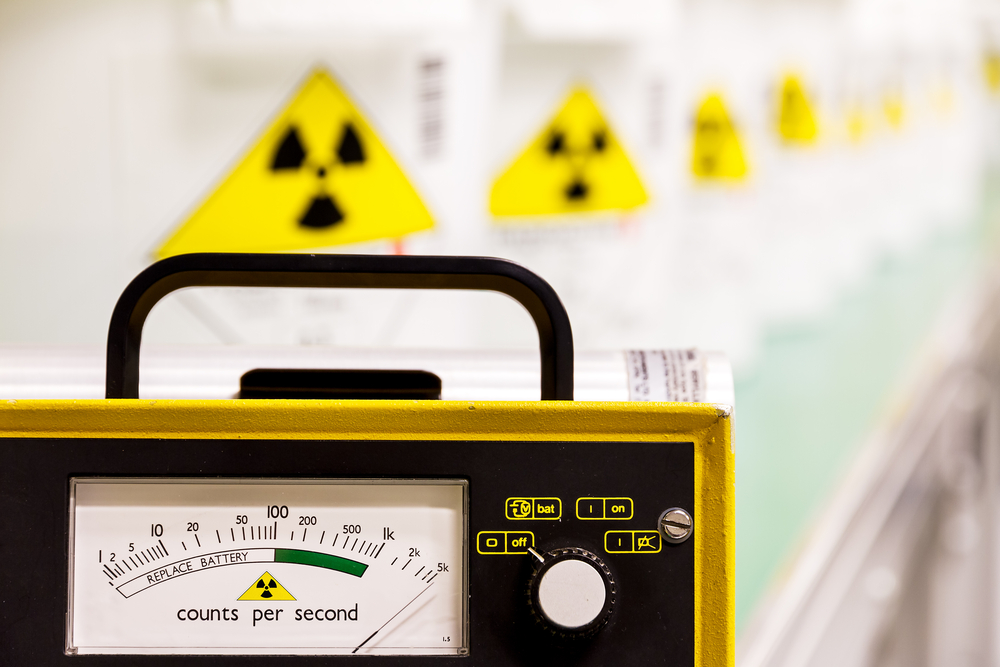
Nuclear Chemistry or Nuclear Physics Labs
Nuclear chemistry involves understanding the processes of radioactivity, nuclear reactions, and the properties and behavior of radionuclides. It is closely related to nuclear physics, which focuses on the fundamental nature and properties of atomic nuclei and their interactions.
— Design Considerations: Implement strict radiation safety protocols and shielding requirements. Ensure proper disposal and storage of radioactive materials.
— Functional Notes: Provide specialized equipment for radiation detection and analysis, such as gamma spectrometers and alpha counters.
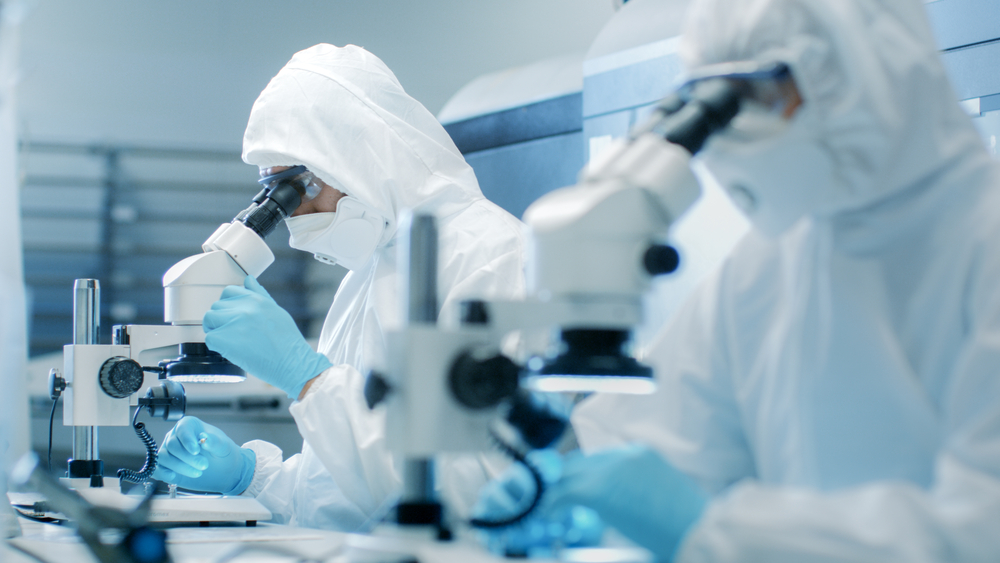
Cleanroom Laboratories
Cleanrooms are present in labs such as pharmaceuticals, biotechnology, electronics, aerospace, and manufacturing.
— Design Considerations: Maintain strict environmental controls for cleanliness and particle contamination. Ensure proper air filtration and circulation systems.
— Functional Notes: Integrate equipment and furniture that are compatible with cleanroom standards, such as stainless-steel surfaces and sealed storage cabinets.

Genomics Labs
These are molecular biology labs that focus on the development and improvement of genetics and genomics technologies.
— Design Considerations: Provide a flexible layout to accommodate high-throughput workflows. Ensure integration of bioinformatics tools for data analysis.
— Functional Notes: Include advanced instruments like DNA analyzers and mass spectrometers. Ensure easy access to liquid handling robots and other automated systems.
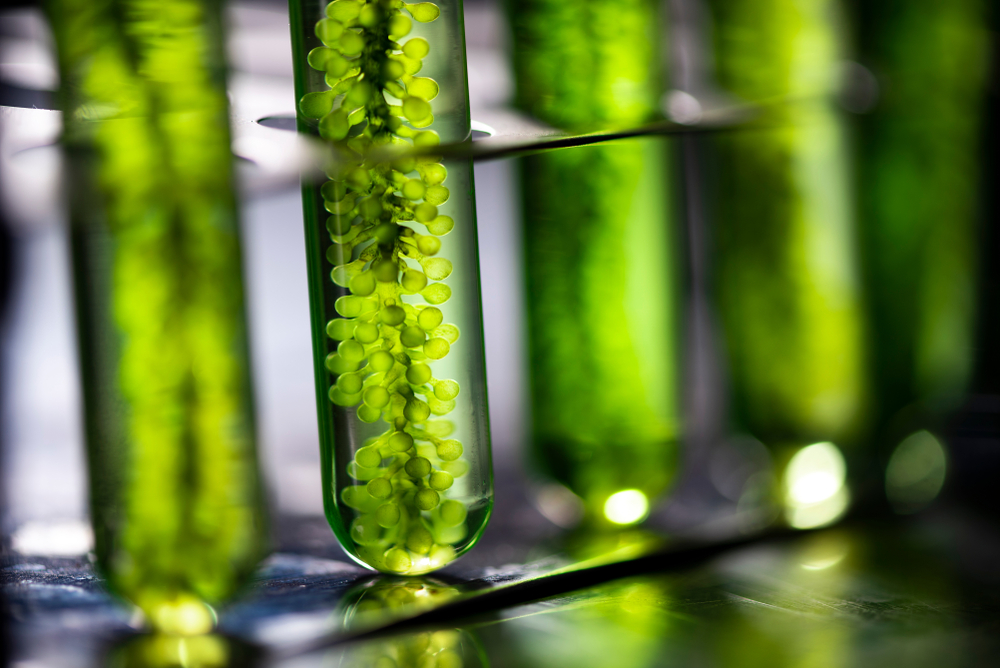
Environmental Laboratories
These labs analyze environmental samples, such as air, water, soil, and wildlife, to assess pollution levels and environmental health.
— Design Considerations: Provide space for sample collection and preparation from various environmental sources. Ensure proper ventilation systems and containment for hazardous samples.
— Functional Notes: Include specialized equipment for environmental analysis, such as spectrophotometers and gas chromatographs. Ensure compatibility with regulatory standards for environmental testing.
By considering these specific needs and requirements, designers and researchers can create laboratories that meet functional needs and enhance productivity, safety, and innovation in their respective fields.
Conclusion
In conclusion, the merging of laboratory design with functionality is key to creating effective lab spaces that meet the diverse needs of researchers and scientists. Lab furniture should be selected with careful consideration of materials, ergonomics, safety features, and technological integration to ensure that it enhances the overall functionality and aesthetics of the lab. By investing in high-quality, durable furniture and considering both initial and long-term costs in lab design, you can create workspaces that promote collaboration, innovation, and efficiency, ultimately supporting the advancement of scientific research and discovery.

